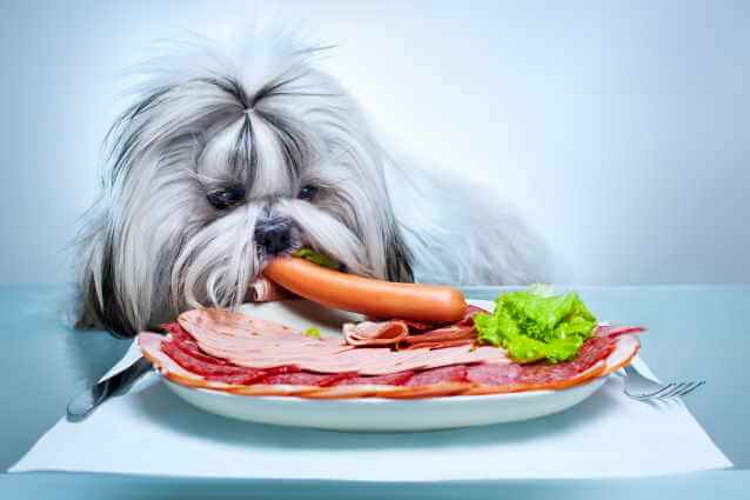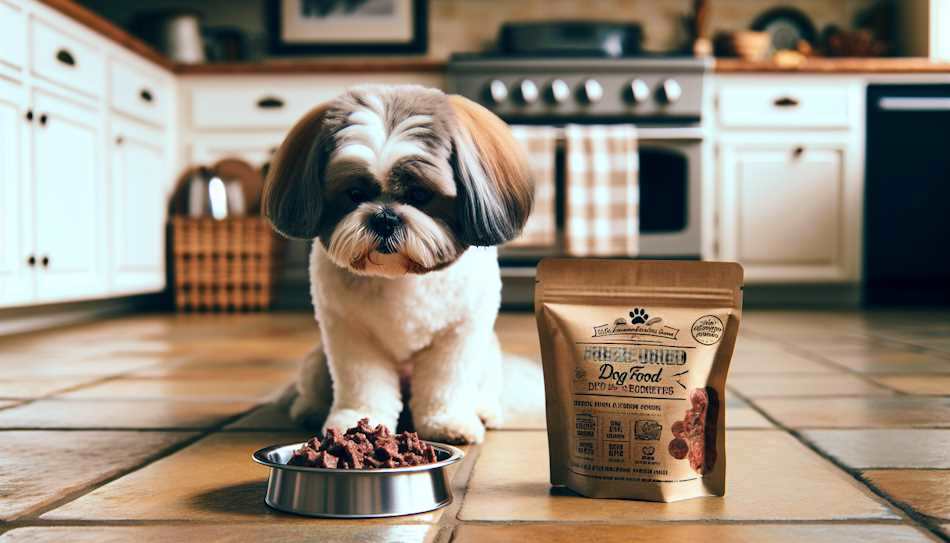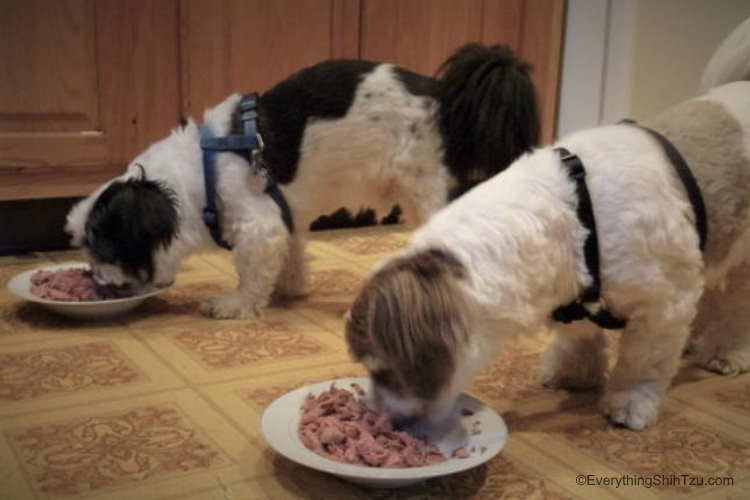- Home
- Shih Tzu diet
- raw food diet
Making The Switch To
A Raw Dog Food Diet: 7 Tips That Will Help the Transition
WRITTEN BY MOLLY | EVERYTHINGSHIHTZU.COM
Getting your canine companion to switch to a raw dog food diet may take a little bit of time.
However, it will be well worth it in the end when your dog enjoys the benefits that may come from eating this type of food that is healthy for them.
The good news is that many people have successfully made the transition to a raw food diet before us, so there is no shortage of advice to aid you along the way.

To help you transition your pet to a raw food diet, we have gathered the following seven tips gathered from around the web.
1. Adjust your feeding schedule.
By feeding your dog at a set schedule may make them less reluctant to try a new food.
Being fed on a schedule you dog will know when his next meal is, whether it be the next day or later that evening, and if he's hungry and knows that it will be a while before his next meal, he may be less likely to turn his nose up to this new food.
To help encourage your dog's acceptance you could schedule his meals after a vigorous routine activity.
Long afternoon walks or jogs, or even after a long playtime will help build up your pups' appetite.
2. Adjust how much food your dog is getting.
If you're finding that your dog isn't finishing his plate of food, you may have to adjust how much food he is getting each serving.
Many presume that a dog needs more food than then the recommended serving size.
Another good way to make sure your dog finishes what's on his plate once adjusting his serving size, is to set a time limit to eat it.
If you leave a plate of food down all day for your dog, he knows that he can go back any time to eat.
However, if you give him only 20 minutes to finish it before you take it away, he'll realize that there is no food for him to go back to when he gets hungry and will have to wait until the next schedule feeding.
Also, with a raw diet you really shouldn't leave it lying around for hours as it allows bacteria to grow on your dog's food.
So, getting in the habit of picking up their food within a short period of time, for example 10 minutes after they walk away from it, will help avoid bacteria growth and keep your dog from getting sick from contaminated food.
Doing this will also help train them from thinking that mealtime is an all-day buffet available whenever they want it.
3. Lay off on the treats
Your dog is a good boy (or girl) and if your like many of us, you like to spoil them with a few treats throughout the day.
We like to reward our dogs for good behavior, nothing wrong with that. But, it becomes a problem when we give them too many treats before their meals and it spoils their appetite so that when their dinner is set down in front of them they aren't very hungry and will leave much of it on the plate.
Speaking of dinner, you may also find yourself sharing your own meals with your beloved pup. And why not, if its good enough for you it's good enough for him too.
However, if you are finding it difficult for your dog to eat his own food, this could be the reason why.
So if you are trying to get him to eat his own nutritious meals, you might want to cut out the scraps and treats.
4. Mixing it up and keep it fresh
Feeding the same kind of food all of the time could become boring for your dog and he may become disinterested in it.
Mix it up a little by serving a variety of different food every couple days.
You could change up the proteins--instead of beef every day, give him chicken, or fish, or duck.
Try a variety of different fruits and veggies too. Mixing it up keeps it fresh and helps to reduce food boredom.
5. Make it fun
A little stimulation may encourage your dog to eat a new food.
Make it fun by experimenting with various activities and toys that will encourage your dog to work at getting the food out.
6. Maybe he’s not feeling well
When you’ve tried different methods and your dog is still not eating, it could be a sign that your dog is not feeling well.
If his lack of appetite is accompanied by a general lack of interest in any activity, you would do well to have him checked by a vet.
7. Do the slow switch method
Some dogs just need more time to adjust to raw food diet especially after being so used to a different type of food for a long time.
To facilitate his adjustment, you might want to consider doing the slow switch method.
What you do is you mix his old diet with the new diet, gradually increasing the proportion of the new diet, until such time when you are feeding him just raw food.
This will allow him to acquire a taste for raw food at a less stressful pace.
Changing your dogs diet to raw food won't be as simple as just setting it down in front of him and command him to eat.
I wish it were this easy, but the truth is, you're going to have to get creative, this is especially true if you have a picky eater that has been eating wet or dry dog food all his life.
For sure it is much easier to start feeding them a raw diet when they are puppies and it's the only diet they've ever known.
Expert tips and guidance goes a long way in helping make the transition, and there are a lot of books about feeding your dog a raw diet that can help.
Also don't forget to let your veterinarian know you plans about switching to a raw food diet.
Keep in mind however, that if you have a traditional veterinarian they may not be as open to a raw diet as a more holistic vet would be.
More importantly, you will have to make sure that if you do make the switch to a raw diet, you have to make sure that it is safe and nutritionally balanced for your dog.
Do you want to find out more about a raw food dog food for your canine companion? Check out the following Amazon raw dog food diet books to get you started
- Home
- Shih Tzu diet
- raw food diet



